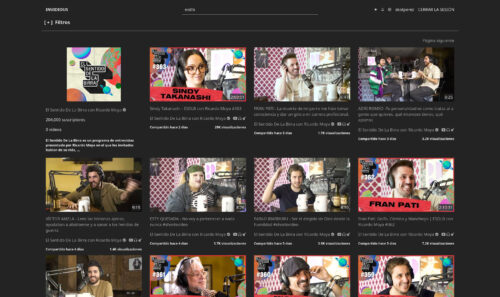Las redes sociales han universalizado la antigua grosería de la barra de bar y el muro del retrete. La rima cruel, la gracia, la consigna, ahora la repiten en público personas que ocupan cargos públicos y que están seguras de poseer una educación exquisita.
Que los gases de la vileza ya han invadido sin remedio el aire de la vida pública española lo hemos sentido de golpe al escuchar por todas partes ese eslogan siniestro, “que te vote Txapote”, que provoca una reacción no ya moral sino física, como esa arcada que desata un olor a podrido. Es el tipo de gracia que se hace en un grupo de amigotes unidos por una recia carcajada española, cuando alguien advierte de que no va a ser “políticamente correcto” y cuenta a continuación un chiste de violaciones o de negros. La diferencia es que en la nueva era el chiste y la risotada desbordan el grupito confidencial y se hacen públicos sin pudor ni vergüenza, con chulería desafiante, con un clamor de chusma beoda en el calor tórrido de una plaza de toros. Las redes sociales han universalizado la antigua grosería de la barra de bar y el muro del retrete. La rima cruel, la gracia, la consigna, ahora la repiten en público personas que ocupan cargos públicos y que están seguras de poseer una educación exquisita, y se ve estampada en los laterales de un autobús electoral de un partido político ya agitado de antemano por una inminencia de victoria.
La gracia consiste en asociar al presidente del Gobierno y candidato socialista a un asesino etarra. Y para acompañarla, aunque sin decirla, con cazurrería y descaro, Alberto Núñez Feijóo invocó el aniversario de alguien que merecería al menos el respeto sagrado que se debe a los inocentes y a las víctimas. Un rasgo de la edad de la vileza es la repetición metódica del abuso, la injuria y la mentira. Al volverse habituales no pierden su veneno, pero cada vez provocan menos escándalo. Es posible que los primeros sedimentos de esta nueva época fueran sembrados por este personaje público, siempre más o menos en la sombra, Miguel Ángel Rodríguez, que según dicen asesoró a Feijóo antes del debate, y que hace 15 años usó por primera vez en público, en programas de televisión, a sabiendas de que lo hacía, la calumnia contra una persona del todo honorable. Los residuos de vilezas pasadas los olvida todo el mundo, salvo los que las sufrieron. En 2008, en plena campaña derechista para desacreditar la sanidad pública en Madrid, Miguel Ángel Rodríguez llamó reiteradamente nazi en varias tertulias de la televisión al doctor Luis Montes, antiguo coordinador de Urgencias del hospital de Leganés, acusándolo de haber abusado de las sedaciones de enfermos graves para acelerarles la muerte. El embustero sabe que a partir de un cierto grado la mentira tiene un efecto paralizador, como lo tiene siempre un acto de violencia súbita, un grito, una bofetada. Las mentiras de Miguel Ángel Rodríguez trastornaron la vida y la carrera de un hombre íntegro, que ya había sido objeto de una sostenida persecución política. Los tribunales confirmaron la inocencia del doctor Montes, y condenaron por un delito de injurias a Rodríguez. Ya no importaba nada. El daño estaba hecho. Había enfermos que se negaban a ser atendidos por el médico injuriado. Y el mentiroso y condenado por la justicia convirtió su indecencia en un mérito para su currículum, que ha vuelto a situarlo en lo más alto de la influencia política en España.


